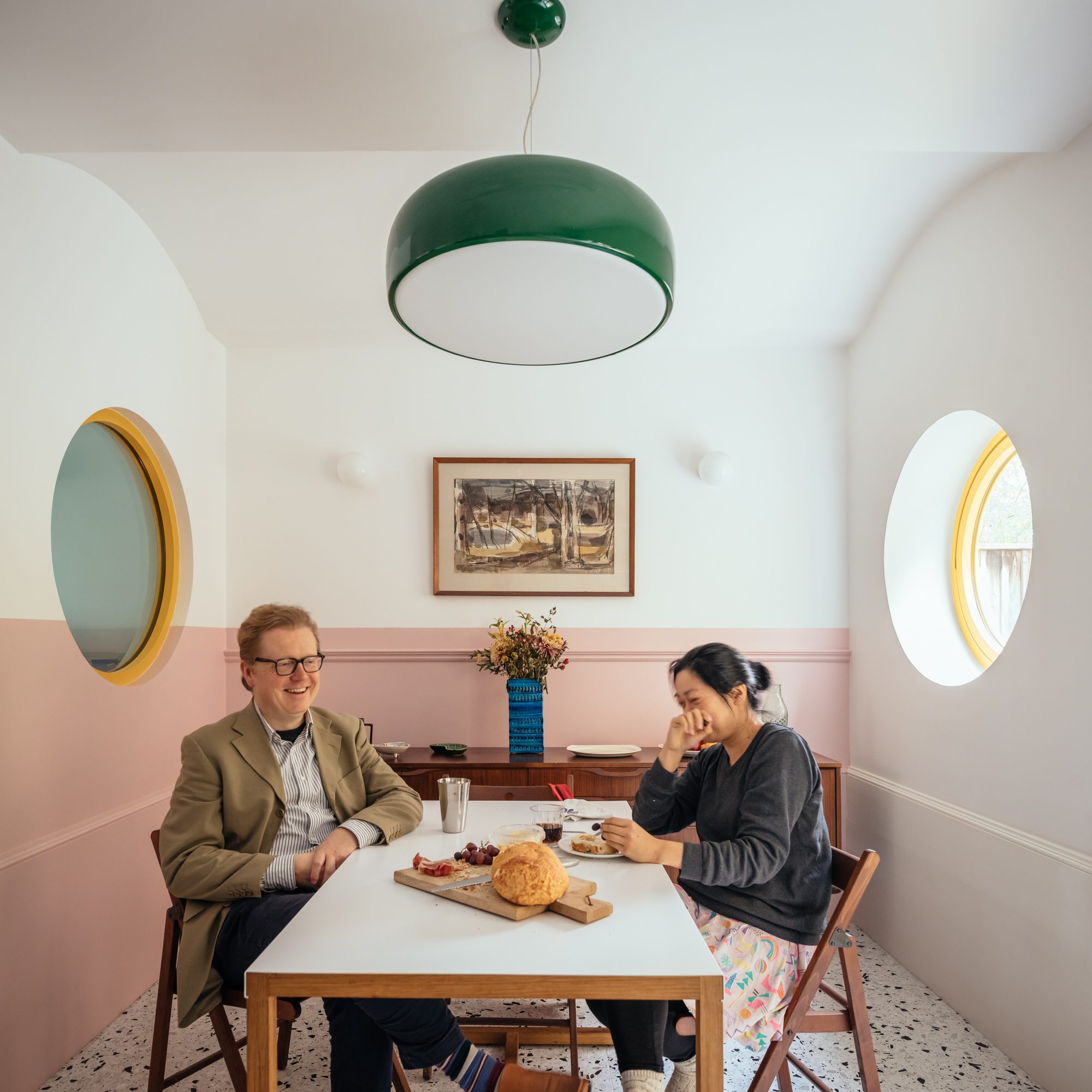In Mile End, Charles Holland Architects has refurbished a Victorian house that dates back to the 1880s, adding a healthy splash of colour and character to the property.
Big round windows, with timber frames proudly painted mustard yellow, guzzle up daylight and connect new spaces; ornate dado rails continue across doors; gutters and rain pipes are coloured jade green; and a pink skirting board climbs to 600mm high. What is going on here? In Mile End, East London, Charles Holland Architects (CHA) has transformed a Victorian terrace into a family home abounding light, colour, and most importantly, fun.
Designed for author Will Wiles and Hazel Tsoi-Wiles, the property that once suffered from damp and structural issues is now filled with details that play on the house’s heritage, bringing with them moments of delight and surprise to the family home.


Windows and external doors are all timber-framed, double-glazed units (including the stained glass unit — see the gallery at the end of the article) made by Surbiton Windows.
The aforementioned windows, which wouldn’t be out of place in a Jacques Tati film, have cleverly been deployed to connect a sequence of internal and external areas, namely a comprising a small courtyard, a study, and a dining room, with natural daylight being brought deep into the floorplan. Other thresholds embody this colourful language, with further windows and doors taking on the mustard yellow hue for their frames.
Dating back to 1880, the house’s Victorian vernacular shines through as well. Domestic decorative details and mouldings commonplace at the time are exhibited in the form of an exaggerated skirting board that doubles as a datum, climbing from a typical height at the house’s front, to 600mm at the rear.


Along with pink and white paint, the interior finishes include white wall tiles used with blue Keracolour grout.
Interior doors are set flush within walls, allowing the skirting and a dado rail to continue across them, being delicately cut away so to allow doors to actually open, allowing, as CHA say, to extend the idea of the interior “as a series of horizontal strata.”
On the outside, meanwhile, rough-cast render has been used to finish external walls, with the horizontal language of the interior exhibited through grey and white paintwork. The house, however, is still to be finished. A second phase of work, due to finish next year, will see changes to the street elevation, with a new bay window and porch being added, the latter being formed in cast terrazzo — a nod to British artists Rachel Whiteread’s 1990s artwork House, a seminal piece that cast in concrete the interior of another nearby Victorian house in the neighbourhood.


The kitchen is part bespoke, fitted with standard units, with doors, drawers and cupboards made of blue valchromat, twinned with Hewi yellow handles; the worktop and sink are from Durat and made from recycled plastic. The flooring, meanwhile, is terrazzo from Diespecker.
“It is increasingly vital to develop creative solutions for existing buildings, said Charles Holland. “This project offered an important chance to upgrade and overhaul a house with a number of serious problems and to do this whilst showing that such projects can also have a sense of joy and fun. We retained almost all the existing structure, working around issues to create a series of spaces that are enjoyable and useful and reflective of the client’s family life. The design language grows from this, giving expression to the way that we have carved out the interior to make the spaces they needed whilst wrapping the exterior in a new, warm overcoat.”
Credits
Client
Will Wiles and Hazel Tsoi-Wiles
Architect
Charles Holland Architects
Structural Engineer
Morph Structures
Contractor
A Builder’s Team
Additional images and drawings
Source: Architecture Today


